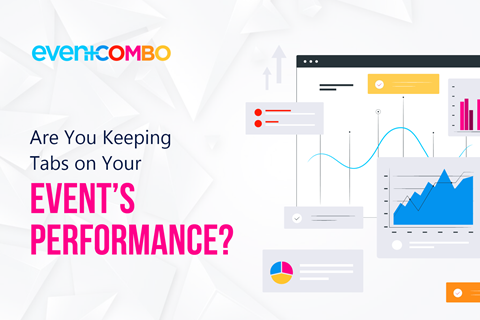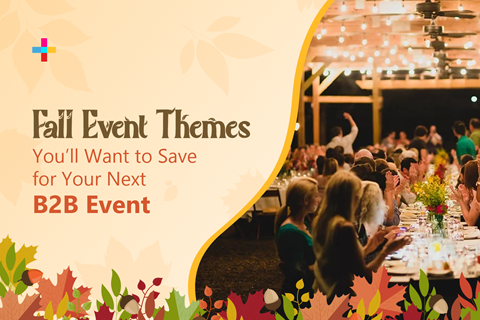Crafting Unique Event Experiences Through Audience Segmentation

Mar 07, 2024 Cris Baroro (Guest Publisher)
In the competitive landscape of event organizations, the success of an in-person gathering isn’t merely a product of lavish venues or the glitz of tech integrations. Instead, tailor-made experiences based on detailed audience segmentation are starting to steal the show. Embracing the diverse personas in your audience beyond the confines of generalized content is the key to delivering an unforgettable event experience.
The Power of Audience Segmentation
Audience segmentation is a strategic approach to divide your crowd into distinct categories, considering their demographics, behavior, preferences, and professional attributes. When implemented correctly, it becomes the lens enabling you to view your audience not as a homogeneous whole but as a vibrant mosaic of unique individuals.
Making Segmentation Work
To elevate the attendee experience and ensure your event is as engaging and relevant as possible, effective segmentation is key. Begin by identifying the most impactful segmentation criteria tailored to your event environment.
- Demographic Insights: Start with the basics like age, location, and gender as foundational data points.
Digging Deeper: Go beyond basic demographics to explore past event participation, specific interests, and attitudes towards event themes. This richer data helps tailor your event strategy more closely to attendee preferences, enhancing content relevancy and engagement.
- Interest-Based Segmentation: Understand the hobbies, preferences, and causes your attendees care about.
Personalized Programming: Use these insights to curate bespoke experiences, sessions, and engagement opportunities that truly resonate with your audience segments.
- Behavioral Insights: Analyze previous interactions with your brand or events, including session attendance, app engagement, and feedback.
Tailored Engagement: Leverage this data to fine-tune communication, content delivery, and even the layout of spaces to match attendee behavior and preferences.
- Professional Profiling: For B2B events and conferences, delving into attendees' professional backgrounds can uncover valuable segmentation opportunities.
Industry, Job Title, and Seniority: These details can significantly influence the selection of speakers, the topics chosen for discussion, and the nature of networking opportunities, ensuring they align with the professional interests and needs of your audience.
Customized Networking: Use professional attributes to match attendees with similar interests or complementary professional goals, enhancing the value of networking sessions.
Employing a multi-dimensional approach to segmentation allows event planners to create more personalized, engaging, and memorable experiences for all attendees.
Designing Segmentation-based Experiences
Utilizing the insights gained from detailed segmentation, you can transform the raw data into actionable strategies, creating a uniquely personalized and enriched event experience for each attendee.
Crafting Unique Content
Generic content runs the risk of not resonating with your audience, while personalized content captivates and retains their interest. Examples of putting this into practice include:
- Customizable Agendas: Allow attendees to create their own content schedules from a selection specially curated to their interests. For instance, a tech conference could offer tracks tailored to different roles, such as developers, designers, and project managers
- Targeted Speaker Sessions: Align speakers with specific audience segments by their areas of expertise. A marketing summit, for example, might feature a renowned social media expert specifically for the digital marketing professionals in attendance.
- Interest-Based Workshops: Offer workshops that cater to the unique hobbies or professional skills of different segments. A fitness event could include sessions ranging from high-intensity interval training for the more athletically inclined to nutritional seminars for those interested in the science of health.
Facilitating Focused Networking
Curated networking opportunities can lead to more meaningful and productive professional connections. Consider implementing the following ideas:
- Segment-Specific Networking Zones: At a large conference, designate areas for different industry sectors, job functions, or topics of interest, like a 'Tech Innovators' lounge or a 'Green Energy Advocates' meet-up spot.
- Mentorship Pairings: Use attendee profiles to match mentors with mentees, creating a structured way for less experienced professionals to gain insight from industry veterans. For example, a young entrepreneur could be paired with a seasoned executive in a similar field.
- Networking Apps with AI Matchmaking: Deploy event technology that uses AI to recommend networking matches based on shared professional interests, challenges, or goals. This tech can facilitate introductions and schedule meet-ups during the event, ensuring everyone finds their ideal networking match.
Balancing Technology and Personal Touch
Modern event technology can both aid the process of audience segmentation and improve the experience for different segments.
- Leverage Event Tech
Aside from digital tools for collecting data, tech like AI match-making for networking, AI voice cloning for speakers, VR/AR for immersive experiences, and AI video avatars for virtual events are all becoming more popular at events. These technologies can help you create a more engaging and memorable experience for your attendees.
- Maintain the Human Element
While you employ the convenience of event tech, maintaining the warmth of human interaction in on-ground management, customer service, or during the event activities creates a delicate balance that wins hearts.
Overcoming Challenges in Segmentation
Implementing segmentation has challenges. Ensuring data privacy, respecting diverse cultures, and avoiding generalizations are crucial.
Post Event Communication
Post-event communication should also reflect your segmentation strategy. Customizing follow-up emails or feedback forms based on the topics decided and activities participated by different segments enhances the overall event experience, even after it’s over.
Conclusion
Crafting unique event experiences through audience segmentation signifies the shift from traditional event planning to a more attendee-focused, personalized approach, propelling the in-person event industry’s evolution. What emanates from such detailed planning is not just an event but a bespoke experience that assures attendees of their value, thereby setting the stage for more successful and emotionally rich events in the future.
For any event tech support reach out to Eventcombo experts today!
About the Author
Cris is currently working in VEED.io as a Search Engine Optimisation Specialist. He is a tech enthusiast who loves capturing photos and videos. He loves technology and can do video editing, programming, QA system testing, and content writing.
close








